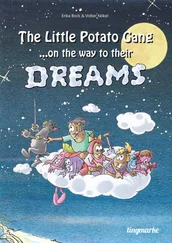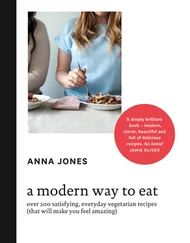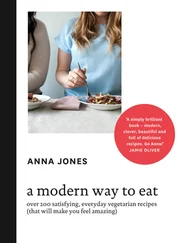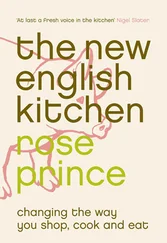When casting around for a new strain of bananas that consumers would accept, the United Fruit Company, the American-owned company that controlled most of the world’s banana plantations, alighted on the Cavendish. It tasted nothing like the Gros Michel – growers at United Fruits noticed that the flavour was off and the texture was dry – but it looked the same, it transported easily and, crucially, it was resistant to Panama disease. Without having much to recommend it in terms of flavour or texture, the Cavendish became the banana to conquer the world, largely because it looked the way people expected a banana to look. (At the time of writing, the Cavendish has been hit by a new strain of Panama disease, which casts yet more doubt on the wisdom of the banana industry investing so heavily in just one strain.) 38
As a fruit engineered to be seedless, every Cavendish banana you buy is an exact genetic clone of every other banana. Bananas are the monoculture of all monocultures. There are more than a hundred varieties of bananas in existence – including red-skinned ones – but you wouldn’t know it from the selection on offer in most shops, where bananas come in just one variety. Except for plantain-eaters who eat them in cooked form, you seldom hear anyone talk about the virtues of different varieties of banana because the whole point is that you expect them to taste the same: not the most delicious thing you ever ate, but cheap, filling and fairly wholesome – compared to a bar of chocolate if not to other fruit. Bananas in the supermarket are mainly marketed not on variety or flavour but on size: small ‘child-sized’ bananas, larger ones for the rest of us.
|
|
| Cabusse |
Caroline |
| Cacanska Pozna |
Caroline Hopkins |
| Cagarlaou |
Carrara Brusca |
| Calville Blanc d’Hiver |
Carrata |
| Calville d’Aout |
Carrey |
| Calville d’Oullins |
Carswell’s Honeydew |
| Calville d’Ulzen |
Carswell’s Orange |
| Calville de Doue |
Cartaut |
| Calville de Maussion |
Carter’s Blue |
| Calville de Saint-Sauveur |
Carter’s Pearmain |
| Calville des Femmes |
Case Wealthy |
| Calville des Prairies |
Castle Major |
| Calville Duquesne |
Catherine (M27) |
| Calville Malingre |
Catshead |
| Calville Rouge d’Automne (Barnes) |
Caudal Market |
| Calville Rouge d’Hiver |
Cavallotta |
| Calville Rouge du Mont d’Or |
Ceeval |
| Cambusnethan Pippin |
Cellini |
| Camelot |
Celt |
| Campanino |
Chad’s Favourite |
| Canada Blanc de la Creuse |
Champ-Gaillard |
| Canvada |
Channel Beauty |
| Captain Kidd |
Chantecler |
| Caravel |
Chantegrise |
| Cardinal (INRA) |
Charden |
| Carlisle Codlin (of Bultitude) |
Charles Eyre |
| Carlton |
Charles Ross (LA 69A) |
| Carmingnolle |
Charlot |
| Carnet |
Charlotte |
| Caroli d’Italie |
Chataignier |
|
|
List of British apple varieties beginning with the letter C (a partial list). Out of all these varieties (more than 150), the only one for sale in most British supermarkets is Cox’s Orange Pippin.
What is true of bananas is true to a lesser extent of other fruits. There are around six thousand British heritage apple varieties, ranging from tart to sweet, from soft to hard, from yellow to green to red. Yet commercial apple production in the UK now centres around just ten varieties, chosen for a reliable look and shape and a certain bland sweetness. This varietal simplification has consequences for our health. Different apple cultivars contain varying levels of phytochemicals: vitamins that have been linked to the prevention of certain types of cancer and cardiovascular disease. If we only ever eat one type of apple, we may not get the full health benefits of eating the fruit. 39
At least with apples, there is still a folk memory of diversity: of the enchanting old varieties that we have lost. This memory is kept alive by farmers’ markets in the autumn. But with bananas, we don’t even expect variety. The Cavendish is an archetypal modern food commodity. Whatever the season, it arrives hygienically zipped in its own biodegradable yellow packaging and it has desirable, healthy overtones. Assuming you get one at the right stage of ripeness, the flavour is as consistent as Coca-Cola. You will find them in the hot summers of Dubai and the freezing winters of Iceland.
Not so long ago, Iceland was a place where fresh fruit was rare. There was a time in the 1930s when Icelanders needed a doctor’s prescription to buy fresh fruit. You can see why Icelandic bananas seemed such a wonderful project to plant biologists of the 1940s. During the early twentieth century, fruit was only available to Icelanders in the summer when there were just three kinds of native berries: regular bilberries ( Vaccininum myrtillus ), bog bilberries ( Vaccininum uliginosum ) and crowberries ( kroekiber ), a type of small black berry growing on sprawling shrubs. The crowberry is mouth-puckeringly sour. Icelandic food writer Nanna Rögnvaldardóttir notes that it would not be considered a delicacy in any country that had access to sweeter tasting berries.
Crowberries used to be one of the inimitable tastes of Iceland, along with moss, seaweed, smoked offal, soured milk ( skyr ) and salt cod. For centuries, the people on this inhospitable island ate a diet unlike anywhere else in the world, determined by what was available. Grain was nearly impossible to grow and so, instead of a slice of bread, Icelanders sometimes ate dried fish spread with butter. 40
In a world before bananas (and all the changes that came with them), Icelanders were people who could appreciate tiny differences in the limited range of ingredients that they ate. In the old days in Iceland, people ate so much cod that they became intensely attuned to the variety of flavours and textures within a single fish, from cheeks to eyeballs. There are 109 words in Icelandic to describe the muscles in a cod’s head. 41
The culture that gave rise to this varied language of food has largely gone. Much of the food of Iceland is now the food of everywhere. Nanna Rögnvaldardóttir remembers a time when salt and pepper – and possibly cinnamon, for cakes – were the only spices you could find in Reykjavik. Now, Iceland – despite its cold climate – enjoys extra-virgin olive oil, sun-dried tomatoes and garlic in profusion.
Since the 1960s, an ever-increasing range of fruits has been imported into Iceland and there is no need to forage for sour crowberries unless you desperately want to for old times’ sake. A typical Icelander today gets 109 calories a day from fruit, compared with just 46 calories in 1960. At the publishing house where Rögnvaldardóttir now works, a consignment of fresh fruit is delivered to the office every day, about half of it bananas. But in all this variety, she can’t help feeling that something has been lost. ‘As virtually all our fruit is imported, we are rather ignorant of the seasons,’ she comments. Bananas are regarded with affection, she says, because they are relatively affordable and always there in the shops, even in winter. In some fundamental way, Icelanders do not know these new foods as intimately as they once knew cod and crowberries. The average Icelander eats 111 bananas every year. Yet to describe this endless feast of bananas, an Icelander has just one bland word: banani .
Читать дальше












